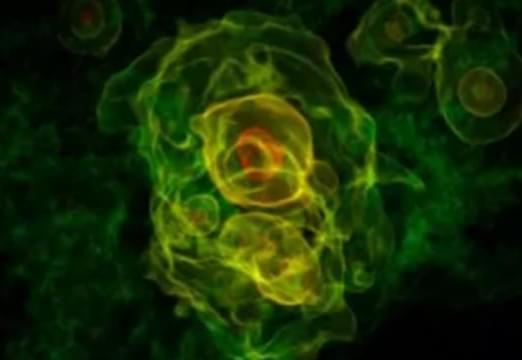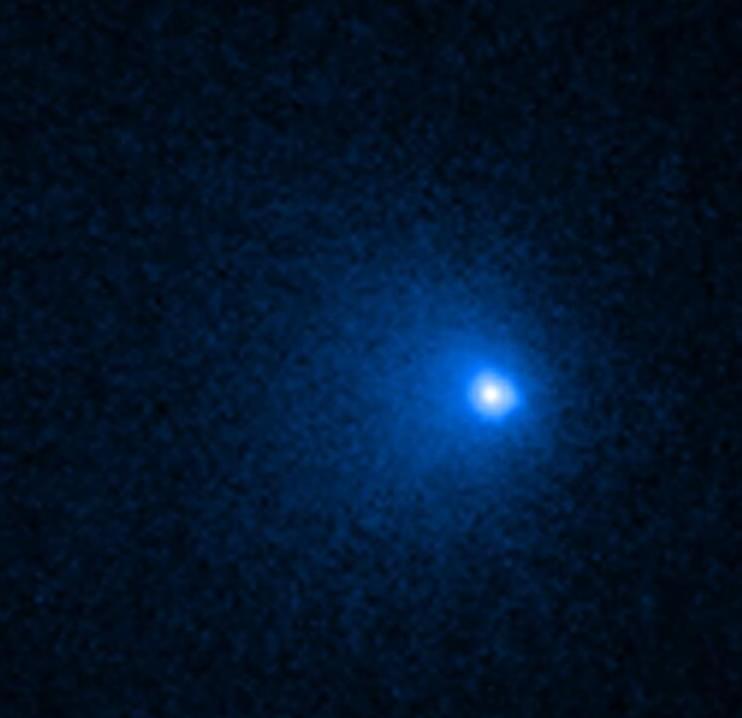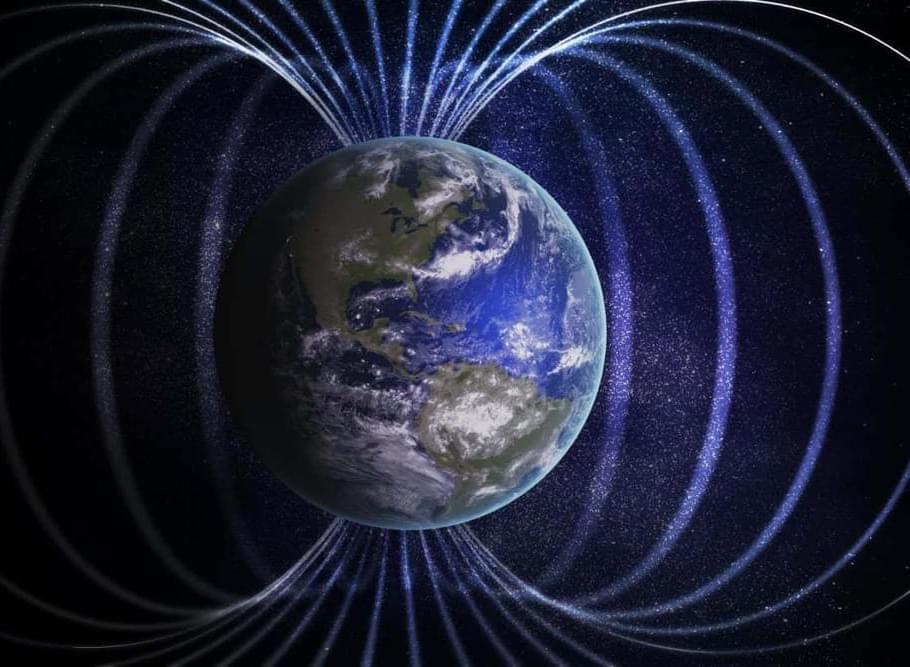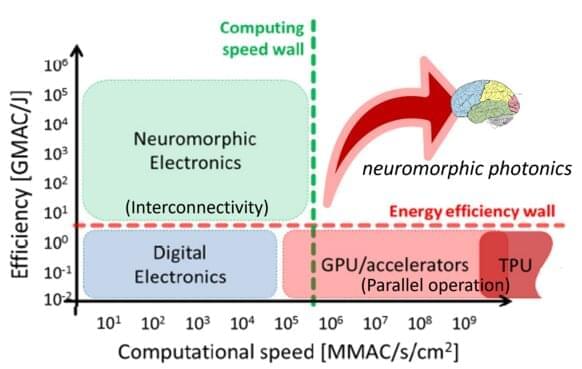How we came to exist is best stated in the Barenaked Ladies’ lyric “It All Started with the Big Bang,” the moment that space-time began.
Inflatons, gravitons, and Dark Matter are the story that is emerging immediately following The Big Bang.




Summary: Researchers identified a genetic correlation between blood biomarkers and a range of mental health disorders. The study provides evidence some substance measures within the blood may be involved in the cause of mental illnesses. For example, immune system proteins may be involved in the development of depression, schizophrenia, and anorexia.
Source: The Conversation.
Mental health disorders including depression, schizophrenia, and anorexia show links to biological markers detected in routine blood tests, according to our new study of genetic, biochemical and psychiatric data from almost a million people.

Milling rice to separate the grain from the husks produces about 100 million tons of rice husk waste globally each year. Scientists searching for a scalable method to fabricate quantum dots have developed a way to recycle rice husks to create the first silicon quantum dot (QD) LED light. Their new method transforms agricultural waste into state-of-the-art light-emitting diodes in a low-cost, environmentally friendly way.
The research team from the Natural Science Center for Basic Research and Development, Hiroshima University, published their findings on January 28, 2022, in the American Chemical Society journal ACS Sustainable Chemistry & Engineering.
“Since typical QDs often involve toxic material, such as cadmium, lead, or other heavy metals, environmental concerns have been frequently deliberated when using nanomaterials. Our proposed process and fabrication method for QDs minimizes these concerns,” said Ken-ichi Saitow, lead study author and a professor of chemistry at Hiroshima University.
Watch the full documentary on TUBI (free w/ads):
https://tubitv.com/movies/613341/consciousness-evolution-of-the-mind.
IMDb-accredited film, rated TV-PG
Director: Alex Vikoulov.
Narrator: Forrest Hansen.
Copyright © 2021 Ecstadelic Media Group, Burlingame, California, USA
*Based on The Cybernetic Theory of Mind eBook series (2022) by evolutionary cyberneticist Alex M. Vikoulov, available on Amazon:
as well as his magnum opus The Syntellect Hypothesis: Five Paradigms of the Mind’s Evolution (2020), available as eBook, paperback, hardcover, and audiobook on Amazon:
“You can’t explain consciousness in terms of classical physics or neuroscience alone. The best description of reality should be monistic. Quantum physics and consciousness are thus somehow linked by a certain mechanism… It is consciousness that assigns measurement values to entangled quantum states (qubits-to-digits of qualia, if you will). If we assume consciousness is fundamental, most phenomena become much easier to explain.
The Mind-Body dilemma has been known ever since René Descartes as Cartesian Dualism and later has been reformulated by the Australian philosopher David Chalmers as the ‘hard problem’ of consciousness. Western science and philosophy have been trying for centuries now, rather unsuccessfully, to explain how mind emerges from matter while Eastern philosophy dismisses the hard problem of consciousness altogether by teaching that matter emerges from mind. The premise of Experiential Realism is that the latter must be true: Despite our common human intuitions, Mind over Matter proves to be valid again and again in quantum physics experiments.
From the Digital Physics perspective, particles of matter are pixels, or voxels if you prefer, on the screen of our perception. Your Universe is in consciousness. And it’s a teleological process of unfolding patterns, evolution of your core self, ‘non-local’ consciousness instantiating into the phenomenal mind for the duration of a lifetime.

The most anticipated electric car of the decade is finally going to hit the tarmac in August later this year, and I can’t wait already. Yes, the iconic DMC DeLorean sports car that defined the pop culture of the 1980s and spilled far beyond just a couple of decades of fame is going to now be resurrected as an EV model. Earlier in the year, the gull-winged silhouette of the upcoming DeLorean excited all automotive fans, and now they’ve dropped a very clear half shot of the car’s rear, and a press release to keep all speculations alive. So, I can confidently say, the DeLorean is going to be back in the future!
The iconic car is in fact all set to hit the limelight on August 18, 2022, at the prestigious Awards Ramp at the Pebble Beach Concours d’Elegance. From what we see in the teaser image, the EV is going to follow the norm with a modern silhouette and this concept gives our imagination wings. If we ignore the rear that looks more akin to the Bugatti Chiron, the EV could be pretty similar to what we see in these renders. A bold form factor with an intimidating front could be on the cards. The side profile has to be sharp and flowing with a supercar-like domineer but slightly bend towards the coupe persona too. As per Troy Beetz, CMO of DeLorean Motor Company Inc, 0 “Excitement is rising like the doors of our iconic sports car, and we are revealing the next generation prototype 3 days earlier than planned on the most prestigious stage at Pebble beach.”
Designer: Recom Farmhouse, Kate Brown and Marvin Lübke.

Supercomputers are extremely fast, but also use a lot of power. Neuromorphic computing, which takes our brain as a model to build fast and energy-efficient computers, can offer a viable and much-needed alternative. The technology has a wealth of opportunities, for example in autonomous driving, interpreting medical images, edge AI or long-haul optical communications. Electrical engineer Patty Stabile is a pioneer when it comes to exploring new brain-and biology-inspired computing paradigms. “TU/e combines all it takes to demonstrate the possibilities of photon-based neuromorphic computing for AI applications.”
Patty Stabile, an associate professor in the department of Electrical Engineering, was among the first to enter the emerging field of photonic neuromorphic computing.
“I had been working on a proposal to build photonic digital artificial neurons when in 2017 researchers from MIT published an article describing how they developed a small chip for carrying out the same algebraic operations, but in an analog way. That is when I realized that synapses based on analog technology were the way to go for running artificial intelligence, and I have been hooked on the subject ever since.”
“Re-Architecting” Low Energy Wireless & IoT — Dr. David Su, Ph.D. 0, CEO & Co-Founder, Atmosic
Dr. David Su, Ph.D. (https://atmosic.com/company/leadership/) is CEO and Co-Founder of Atmosic, a fascinating company that is “re-architecting” wireless connectivity solutions from the ground up to radically reduce Internet of Things (IoT) device dependence on batteries, aiming to make batteries last forever and the Internet of Things battery free – thus breaking the power barrier to widespread IoT adoption.
Dr. Su brings to Atmosic over 30 years of engineering expertise with an extensive wireless background, as his past teams’ radio designs have brought billions of successful devices to market. He was on the early engineering team at Atheros, as VP Analog/RF Engineering, and VP Engineering with Qualcomm following the 2011 acquisition of Atheros. He was also at HP for several years.
Dr. Su earned a Bachelor of Science (B.S.) and Master of Engineering (MEng) in Electrical Engineering, from University of Tennessee, a Ph.D. in Electrical Engineering from Stanford University, and has been a Consulting Professor of Electrical Engineering at Stanford. He is an Institute of Electrical and Electronics Engineers Fellow.
Musing on living long enough to know.
Do aliens really exist? “It is virtually inconceivable to me that there isn’t intelligence somewhere in the universe,” says psychologist and astrobiologist Dr. Douglas Vakoch. “It’s just numbers.”
What happens if aliens send us a message? Learn more in this video from Life Noggin — https://youtu.be/P7afrpjnNCk.
Dr. Vakoch has spent his career carefully composing and transmitting messages to nearby stars in hopes of finally making contact with intelligent extraterrestrial life. As the president of METI International, an organization dedicated to messaging extraterrestrial intelligence, part of his job is to seek out the corners of the universe that could be home to planets that are within the “Goldilocks zone”: not too hot, not too cold, but just right to support life.
In 2017, astronomers announced that three planets in the planetary system of the star TRAPPIST-1 fit the bill. Now, Dr. Vakoch and his team of scientists are using the Goonhilly Satellite Earth Station to send a transmission to the area. The only problem? By the time a signal sent from TRAPPIST-1 could reach Earth, Dr. Vakoch will be long gone. In order to experience this for himself, he would have to live to 140 years old.